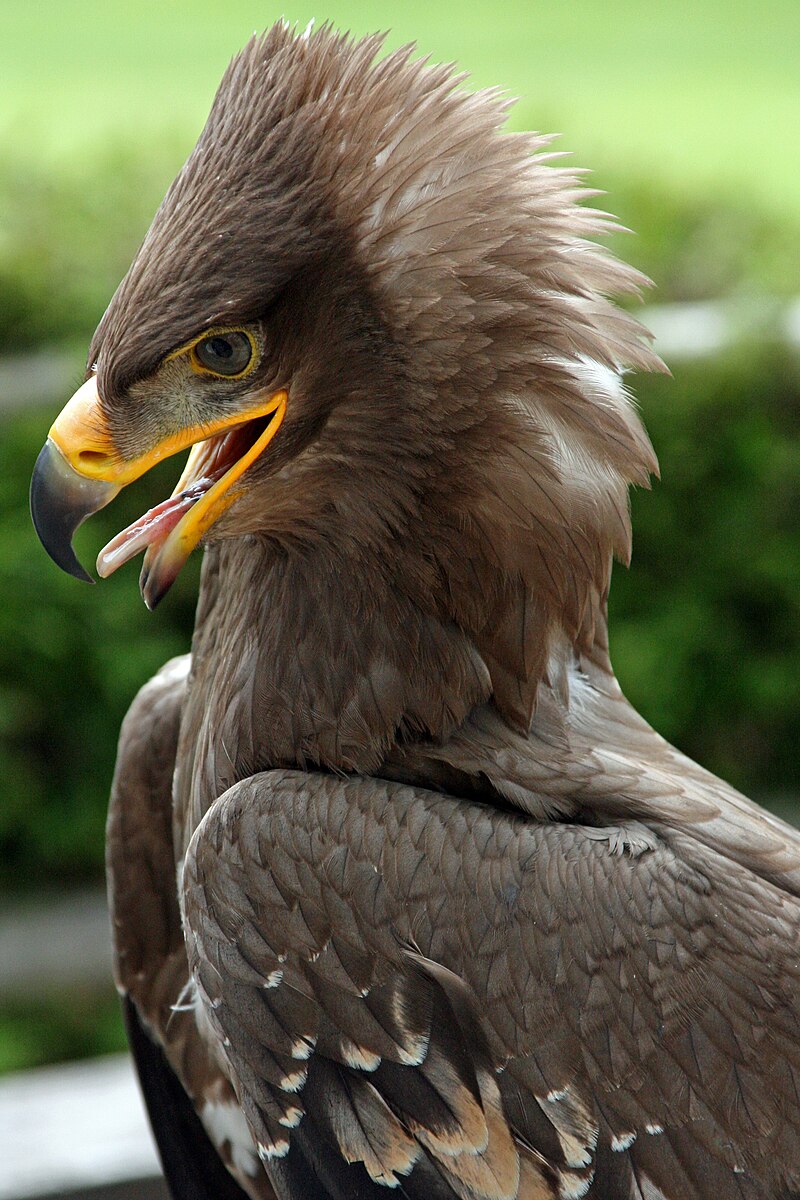Steppe eagles (Aquila nipalensis) are large birds of prey known for their unique sleeping habits. These majestic birds are often observed perching upright in the open, utilizing isolated trees, posts, rocks, or other suitable low lookouts to rest. Their sleeping posture and behavior are fascinating aspects of their ecology.
Sleeping Posture and Behavior
Steppe eagles are known to sleep while perched upright in the open, often utilizing isolated trees, posts, rocks, or other suitable low lookouts such as mounds or straw-piles. They are also frequently seen on the ground, where they may stand for long periods of the day and walk with a horizontal posture, with their wingtips just exceeding the tail-tip.
Factors Affecting Sleeping Habits
 Image source: Steppe Eagle by Fimb
Image source: Steppe Eagle by Fimb
The sleeping habits of steppe eagles are influenced by several factors, including:
-
Habitat Preference: Steppe eagles generally occur in drier parts of the steppe, often avoiding agricultural land and human-fragmented areas. They prefer flat plains, arid grassland, semi-desert, and even desert edge habitats.
-
Breeding Behavior: During the breeding season, steppe eagles are known to be more vocal, with their main call being a raspy bark, similar to that of a tawny eagle.
-
Flight Characteristics: Steppe eagles have a distinct flight pattern, with slow, deep, and stiff-looking wing beats, holding their wings fully extended on upstrokes. This heavy flight pattern is an adaptation to the wind and thermal conditions in their habitat.
Hunting and Feeding Habits
Steppe eagles are primarily scavengers, feeding on fresh dead animals of all kinds. However, they will also hunt and kill small mammals, such as rodents and rabbits, as well as birds up to the size of partridges. They are known to capture their prey on the ground, often utilizing a low soaring or gliding flight at a maximum of 200 meters (660 feet).
Interactions with Other Raptors
Steppe eagles are known to be solitary but are frequently seen in the company of conspecifics throughout the year. They are also known to steal food from other raptors, demonstrating their adaptability and opportunistic behavior.
Conclusion
The steppe eagle is a fascinating bird of prey with unique sleeping habits and adaptations to its environment. By understanding their sleeping posture, behavior, and the factors that influence their sleeping habits, we can gain valuable insights into the ecology and conservation of this remarkable species.
References:
– Steppe Eagle – Facts, Diet, Habitat & Pictures on Animalia.bio
– Factors Affecting Habitat Selection of Endangered Steppe Eagle (Aquila nipalensis)
– Steppe Eagle (Aquila nipalensis) Information | Earth Life
– Steppe eagle – Wikipedia
– Aquila pomarina: INFORMATION – Animal Diversity Web

